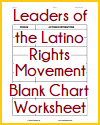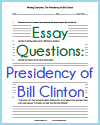The movement for Latino rights in the U.S. has been shaped by several pivotal events that have significantly advanced the struggle for equality, justice, and civil rights.
The Mendez v. Westminster Case (1947): This landmark federal court case challenged the segregation of Mexican-American students in California schools. The Mendez family, along with other plaintiffs, argued that their children were being unlawfully segregated. The court ruled in favor of the Mendez family, leading to the desegregation of California schools and setting a precedent for the later Brown v. Board of Education case. It was a significant victory in the fight against educational discrimination.
The Bracero Program (1942-1964): Initiated during World War II, the Bracero Program allowed millions of Mexican laborers to work temporarily in the United States, primarily in agriculture. While the program provided economic opportunities, it also highlighted issues of labor exploitation and poor working conditions, leading to greater awareness and organizing among Latino workers. The program's legacy influenced future labor rights movements and policies.
The Delano Grape Strike (1965-1970): This major labor strike was led by the United Farm Workers (UFW), co-founded by Cesar Chavez and Dolores Huerta, to protest poor wages and working conditions for farmworkers in Delano, California. The strike garnered national attention and support, leading to a successful boycott of table grapes and ultimately to improved labor contracts. It was a pivotal moment in the farmworkers' rights movement and helped to establish the UFW as a powerful labor union.
The Chicano Moratorium (1970): This mass protest in East Los Angeles was organized to oppose the Vietnam War and highlight the disproportionate impact of the war on Latino soldiers. The movement was also a broader expression of Chicano civil rights activism. The moratorium brought attention to issues of racial injustice, discrimination, and the socioeconomic struggles of the Latino community. The police response, which included violence and resulted in several deaths, including that of journalist Ruben Salazar, galvanized further activism and awareness.
The DREAM Act and DACA (2001, 2012): The Development, Relief, and Education for Alien Minors (DREAM) Act was first introduced in 2001 to provide a pathway to citizenship for undocumented youth brought to the U.S. as children. While the act has not passed, the Deferred Action for Childhood Arrivals (DACA) program, implemented in 2012, provides temporary relief from deportation and work authorization for eligible undocumented youth. DACA has significantly impacted the lives of hundreds of thousands of young undocumented immigrants, known as Dreamers, providing them with opportunities for education and employment. The ongoing fight for the DREAM Act and permanent immigration reform remains a central issue in the Latino rights movement.
These events have been instrumental in advancing the rights and improving the lives of Latinos in the United States, contributing to broader movements for social justice and equality.
|











